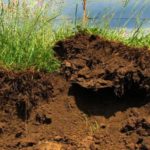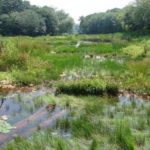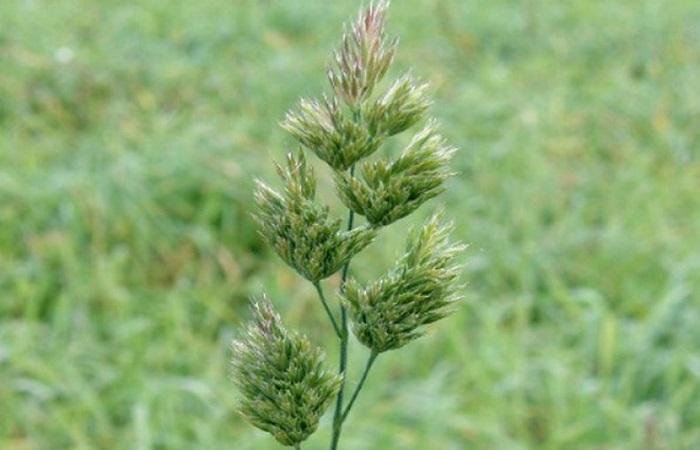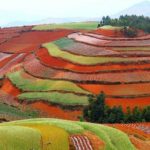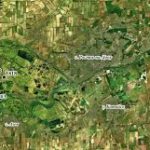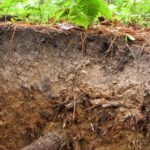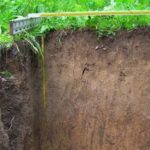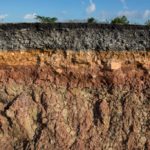Meadow soils are found in forest-steppe, steppe and foothill zones and in deltas of large rivers. Let's consider the characteristics of meadow soils, the morphological structure of the profile, the processes that lead to the formation of this type of soil, what subtypes of soils belong to meadow soils. What types of vegetation are typical for meadow soils, and which ones are important for their formation.
Features of meadow soils
They form under the vegetation of meadows, with increased moisture from above or from soil waters. The soil profile is characterized by the presence of a gley layer in its lower part and a humus layer in the upper part; they are often saline and carbonate.
Soils of this type are found in the sierozem zone; they are characterized by a high humus content in the fertile layer (4-5%), due to the deposition of the remains of perennial herbaceous vegetation.
Meadow soils have an alkaline reaction, mainly due to their saturation with salts. In the lower part of the profile there is an accumulation of carbonates. Sometimes different horizons may contain gypsum.
Morphological structure of the profile
The soil profile of the meadow has the following structure: a turf layer containing humus, which is 10-20 cm thick. It is dark gray in color, has a fine-lumpy or granular-lumpy structure, and is penetrated by grass roots. Then comes a dark gray layer with a bluish tint, 20-40 cm thick, with a lumpy structure. It is followed by a horizon whitish from the carbonates it contains, with inclusions of rusty ocher spots. Below is a gley layer, viscous, gray or whitish-gray in color, also with the inclusion of carbonates.
Basic soil-forming processes
Meadow soils are formed due to gley and at the same time turf processes. The conditions that form such soils are a large amount of rainwater and ground moisture, which rises upward from the lower horizons.
Typically, meadow soils are located on flat areas that are insufficiently drained, subject to constant surface or underground moisture. Groundwater lies 1-2.5 m deep. The peculiarity of meadow soils is grass and turf; the top layer is penetrated by roots, which gives it density.
Subtype overview
Meadow soils are divided into 4 subtypes: typical, swamp-meadow, chernozem and mountain-meadow. Typical ones have characteristic properties and are distributed throughout the entire serozem zone.Meadow-swamps are distributed mainly in the southern part of the forest-steppe zone, on flat plains, in areas with groundwater (1.5-3 m). They are formed under reeds, sedges, and other marsh vegetation, which is replaced by meadow vegetation during dry periods. They may become saline due to the action of groundwater.
Meadow-bog soils are divided into humus and silty soils. Humus ones contain a lot of humus in the top layer. Silty ones contain silt; the damp upper horizon becomes blocky after drying.
Vegetation
On the soils of meadows grow timothy, bluegrass, fescue, meadow geranium, cornflowers, clover, rapeseed, rump, alfalfa, dandelion, meadow foxtail, mouse peas, flax, plantain, St. John's wort, chin, coltsfoot, hedgehog plants typical of the steppe zone.
Meadow lands are used as excellent pasture and hayfields. They are also used for growing forage grasses, usually perennials or legumes. Legumes saturate the soil with nitrogen, perennial grasses strengthen and improve the structure.
Among the agricultural crops on meadow lands, after applying fertilizers, oats, rapeseed, flax, root crops and vegetables are grown.
Meadow soils are formed under conditions that have their own characteristics, such as a combination of gley and turf processes, external and internal moisture. They form on plains or small slopes with high groundwater levels.Their formation involves steppe perennial grass vegetation, which forms turf and a fairly high level of humus. Meadow soils are mainly used as pastures and hayfields; when cultivated, they can also be used for growing crops.



